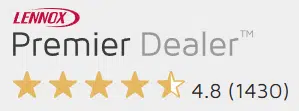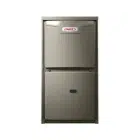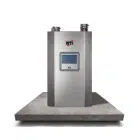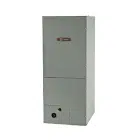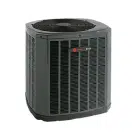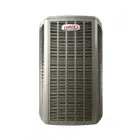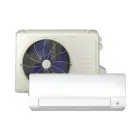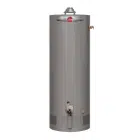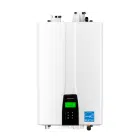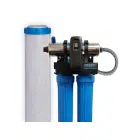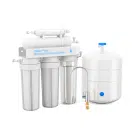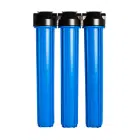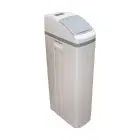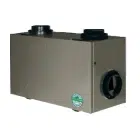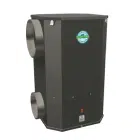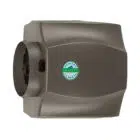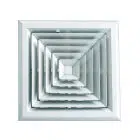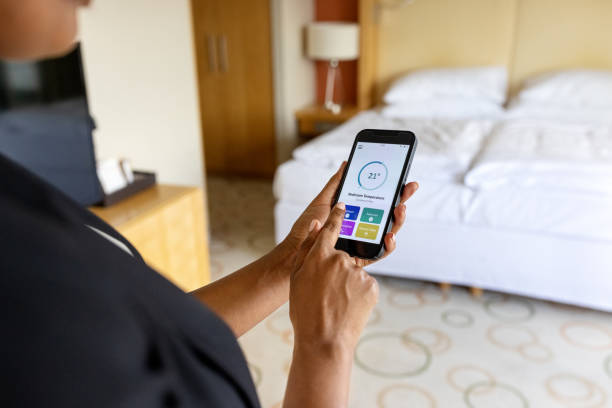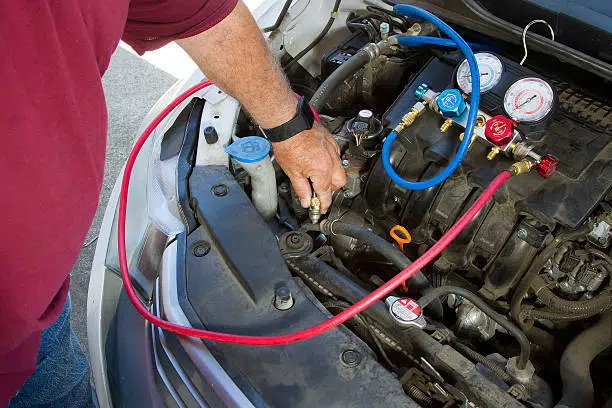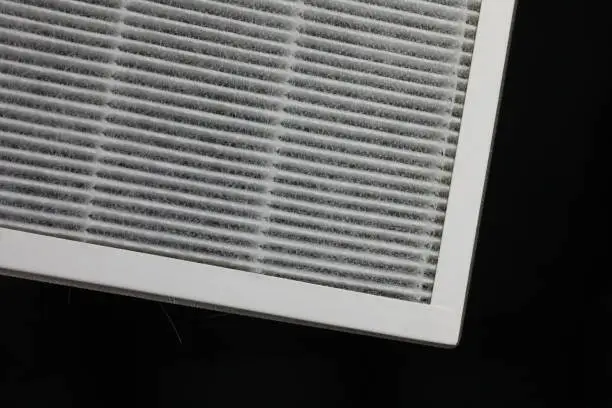
Table of Contents
- The 90-Day Rule: A Good Starting Point
- Pet Lovers, Allergy Sufferers, and High-Traffic Homes: You’ll Need to Change More Often
- Canadian Winters: Heating Season Calls for More Attention
- What Kind of Filter Are You Using? It Makes a Difference.
- Why Bother Changing It? Here’s What Happens If You Don’t
- How to Pick the Right Filter for Your Home
- Time to Check Your Filter?
- FAQ
Let’s be honest: your furnace filter probably isn’t something you think about every day. But if you care about the air quality in your home (and don’t want to see your energy bills spike), keeping up with furnace filter changes should be higher on your to-do list. The good news? Swapping out your air filter is one of the simplest and most cost-effective ways to keep your HVAC system running smoothly. But how often should you do it? That depends on a few key factors.
The 90-Day Rule: A Good Starting Point
In general, most experts recommend you change furnace filter every 90 days. This is a solid guideline for many households using standard 1-inch air filters. Why 90 days? Over time, dust, pet hair, pollen, and other particles get trapped in the filter. The more clogged it becomes, the harder it is for air to flow freely through your system. That means your furnace has to work overtime to heat your home, leading to higher energy costs and, ultimately, wear and tear on your system. No one wants that.
But hold on — 90 days isn’t a one-size-fits-all answer. Depending on your home and lifestyle, you may need to swap out that air filter more (or less) frequently.
Pet Lovers, Allergy Sufferers, and High-Traffic Homes: You’ll Need to Change More Often
Got pets? Whether it’s a dog, a cat, or any fur-shedding friend, their hair and dander can clog up your furnace filter quickly. In a pet-friendly home, it’s best to change furnace filter every 30 to 60 days. And if you’re the type who has a small zoo at home, consider checking it monthly.
Allergies are another big factor. If anyone in your household suffers from asthma or allergies, you’ll want to be extra diligent about keeping the air clean. Allergens like pollen, dust mites, and mold spores get trapped in your air filter, but once it’s clogged, those particles can end up back in your air. For households with allergy sufferers, changing the air filter every 30 days is a smart move, especially during high-pollen seasons.
High traffic in your home, whether from kids, frequent guests, or even living in a dusty or polluted area, can also speed up how fast your air filter gets dirty. In these cases, it’s worth checking your filter every 60 days to avoid problems.
Canadian Winters: Heating Season Calls for More Attention

Here in Canada, your furnace works hard during those long, cold winters. That means your furnace filter gets a serious workout, too. During the heating season, it’s a good idea to check your filter more regularly, especially if it’s a particularly harsh winter or your system is running constantly. Even if you’re following the 90-day rule, peek at it after a month or two to see how it’s holding up. You don’t want your furnace choking on dust when you need it most.
What Kind of Filter Are You Using? It Makes a Difference.
Not all furnace filters are created equal, and the type of air filter you choose will impact how often it needs replacing. Let’s break it down.
Most homes use disposable pleated air filters, which come in different levels of efficiency, known as MERV ratings (Minimum Efficiency Reporting Value). Filters with a MERV rating between 8 and 11 are pretty standard for residential use, and they strike a good balance between airflow and filtration. With these, you’re likely good with a 90-day replacement schedule.
Higher MERV ratings, like 12 or 13, filter out finer particles like bacteria and smoke, which sounds great, right? But there’s a catch—those filters also restrict airflow more, meaning your system has to work harder. In this case, you’ll want to change your air filter more frequently, about every 30 to 60 days, to avoid any stress on your HVAC system.
Then there are washable air filters, which are reusable and environmentally friendly. If you have one of these, you’ll need to clean it about once a month, but the bonus is you won’t have to keep buying new ones. Just be sure you’re cleaning it thoroughly—otherwise, it won’t do its job.
Category | Price Range | Features | Features | Comments |
|---|---|---|---|---|
Disposable Pleated
| MERV 8-11 | Good balance between airflow and filtration | Every 90 days | Standard for most homes. Works well for general dust, pollen, and pet dander. |
High-Efficiency Pleated
| MERV 12-13 | Filters finer particles (e.g., bacteria, smoke) | Every 30-60 days | High filtration, but can restrict airflow. Suitable for homes with allergies or pets. |
Washable/Reusable
| N/A | Varies depending on cleanliness | Clean monthly | Eco-friendly and cost-effective but needs thorough cleaning to stay efficient. |
Why Bother Changing It? Here’s What Happens If You Don’t
Maybe you’re thinking, “Can’t I just let it go a little longer?” Technically, you can, but you probably don’t want to. When you leave a dirty air filter in your furnace, you’re asking for trouble. First off, your system has to work harder to push air through the clogged filter, which makes it less efficient. Translation: higher energy bills.
But that’s not all. A dirty furnace filter puts unnecessary strain on your system, and over time, that can lead to repairs or even a breakdown. Replacing a filter is cheap; fixing or replacing a furnace? Not so much.
Then there’s the air quality. A dirty filter can’t do its job of trapping dust, dander, and allergens, which means those particles could end up circulating around your home. If you’ve got allergies, asthma, or just don’t want to breathe in dirty air, a fresh filter is your best defense.
How to Pick the Right Filter for Your Home
If you’re standing in the hardware store staring at a wall of filters, it’s easy to feel overwhelmed. So how do you pick the right one?
First, check your furnace manual to see what type of filter your system recommends. It’ll tell you the size and might even suggest a specific MERV rating. If you can’t find the manual, don’t panic—most filters come with a guide right on the packaging to help you decide.
If you’re looking for standard filtration, a MERV rating of 8 to 11 should be just fine. But if you’ve got allergies, pets, or just want to ensure your air is extra clean, a higher rating (12 or 13) might be worth it — just remember to change furnace filter more often.
Also, don’t forget your budget. Higher-rated air filters tend to cost more, but if you’re investing in one, you’ll want to stay on top of changing it regularly to avoid airflow issues.
Factor | Recommended Filter Type | MERV Rating | Replacement/Cleaning Frequency | Reason |
|---|---|---|---|---|
Standard Household (no pets/allergies)
| Disposable Pleated Filter | MERV 8-11 | Every 90 days | Provides good filtration for common dust and particles without airflow restriction. |
Households with Pets
| High-Efficiency Pleated Filter | MERV 11-13 | Every 30-60 days | Traps pet hair, dander, and allergens more effectively. Higher filtration is needed. |
Households with Allergies or Asthma
| High-Efficiency Pleated Filter | MERV 12-13 | Every 30-60 days | Captures fine allergens like pollen, dust mites, and mold spores, improving air quality. |
Homes in High-Dust Areas
| High-Efficiency Pleated Filter | MERV 11-13 | Every 30-60 days | Effective at trapping dust and pollutants from outside, maintaining cleaner indoor air. |
Eco-Friendly/Reusable Option
| N/A | N/A | Clean Monthly | Effective at trapping dust and pollutants from outside, maintaining cleaner indoor air. |
Smoke or Chemical Sensitivity
| High-Efficiency Pleated Filter | MERV 13 | Every 30 days | Filters out smoke, chemicals, and fine particles, providing cleaner, healthier air. |
Severe Allergies/Medical Needs
| HEPA Filter (if compatible with system) | MERV 16+ | Every 30 days | Provides the highest level of filtration, removing nearly all airborne contaminants. May require system adjustments. |
Time to Check Your Filter?
If you can’t remember the last time you changed your furnace filter, it’s probably time. Set a reminder in your phone or put it on your calendar so you don’t forget next time. And if you’re not sure which filter is best for your home, or if you’d rather leave the maintenance to a pro, give us a call. At HVAC Service Solutions, we can help you choose the right air filter and keep your furnace running at its best all year round. Contact us via the link below for the professional furnace repair service.
A fresh furnace filter means cleaner air, better energy efficiency, and fewer repairs down the line. Plus, your furnace will thank you.
Frequent Asked Questions
How often should I change my furnace filter?
For most homes, it’s recommended to change your furnace filter every 90 days. However, this can vary depending on factors such as the type of filter you use, whether you have pets, allergies, or live in a dusty environment. If you have pets or someone in your home suffers from allergies, it’s a good idea to replace them every 30 to 60 days. During peak seasons, like winter when your furnace is running more frequently, checking the filter every 30 days is also a good practice.
What happens if I don’t change my furnace filter regularly?
Failing to change your furnace filter can lead to a range of problems. A clogged filter restricts airflow, making your furnace work harder, which increases energy consumption and utility bills. Over time, this extra strain can cause parts to wear out faster, leading to costly repairs or even system failure. Additionally, a dirty filter reduces the air quality in your home by allowing dust, allergens, and pollutants to circulate, which can aggravate allergies or respiratory conditions.
How do I know when it’s time to change my air filter?
The easiest way to know if your air filter needs changing is by inspecting it visually. If the filter looks clogged with dust and debris, it’s time for a replacement. You may also notice signs like your furnace running more frequently, higher energy bills, or reduced airflow through your vents. Some filters come with indicators that change color when it’s time to replace them, but regular inspection every 30 days is the best practice.
What type of air filter is best for homes with pets?
For homes with pets, it’s best to use a high-efficiency pleated air filter with a MERV rating between 11 and 13. These filters are designed to trap pet hair and dander more effectively than standard filters, while still maintaining good airflow. If you have multiple pets, you might need to replace the filter every 30 days to prevent clogs. A higher MERV-rated filter will help keep your indoor air cleaner and reduce the strain on your HVAC system.
What does MERV rating mean, and why does it matter?
MERV stands for Minimum Efficiency Reporting Value, and it measures how effectively an air filter can capture airborne particles. The higher the MERV rating, the finer the particles the filter can trap. For example, a MERV rating of 8-11 is good for standard dust, pollen, and pet dander. MERV ratings of 12-13 can trap finer particles like smoke, mold spores, and bacteria. Choosing the right MERV rating depends on your home’s needs, but a higher MERV filter may restrict airflow, so it’s important to balance filtration with system efficiency.
Can I clean and reuse my furnace filter?
Most disposable pleated furnace filters are not meant to be cleaned and reused. However, if you have a washable or reusable filter, you can clean it about once a month. Washable filters are environmentally friendly and cost-effective, but they must be cleaned thoroughly to maintain efficiency. If not properly cleaned, they can harbor mold or become ineffective at trapping particles. Make sure to follow the manufacturer’s instructions for cleaning to ensure optimal performance.
Is a higher MERV rating always better for my home?
Not necessarily. While a higher MERV rating means better filtration, it can also reduce airflow, making your furnace work harder to circulate air. This can lead to higher energy bills and put more strain on your system, especially if it’s not designed to handle high-efficiency filters. For most homes, a MERV rating between 8 and 11 is ideal, as it provides good filtration without compromising airflow. If you have allergies, pets, or live in a high-dust area, a higher MERV rating (12-13) might be more appropriate.
How does the climate or season affect how often I should change my air filter?
The frequency of air filter changes can depend on the season and climate. In colder months, when the furnace is running more frequently, your filter will trap more particles and debris, so it may need to be changed more often. During the winter, especially in Canada, it’s a good idea to check your furnace filter every 30 days to ensure it’s not clogged. In the spring and summer, if you’re using your HVAC system for cooling, you’ll also want to monitor the filter for pollen and dust buildup.
What’s the difference between disposable and washable furnace filters?
Disposable filters are designed to be replaced every 30-90 days, depending on the type and household conditions. They’re convenient and widely available, but they do contribute to landfill waste. Washable or reusable filters, on the other hand, can be cleaned and reused for several years. They’re more eco-friendly and cost-effective over time, but they require regular, thorough cleaning to maintain efficiency. If you prefer a low-maintenance option, disposable filters might be more convenient.
Can a dirty furnace filter affect my energy bills?
Yes, a dirty furnace filter can significantly increase your energy bills. When the filter is clogged, your furnace has to work harder to push air through it, which means it consumes more energy. This not only leads to higher utility costs but also reduces the lifespan of your HVAC system due to the extra strain. By regularly changing your air filter, you can improve airflow, keep your furnace running efficiently, and save on energy costs.
Share
